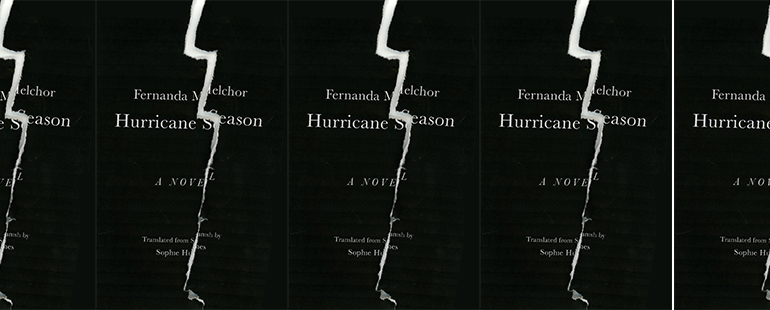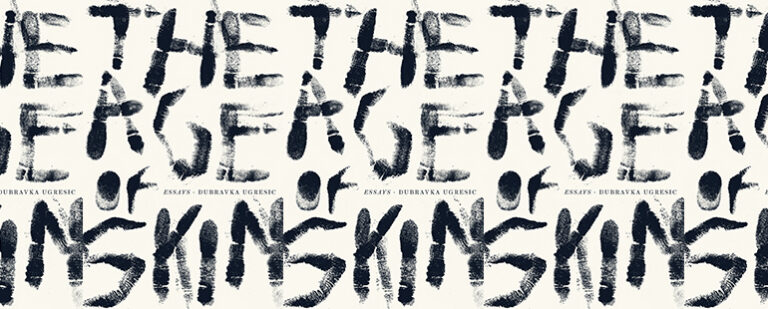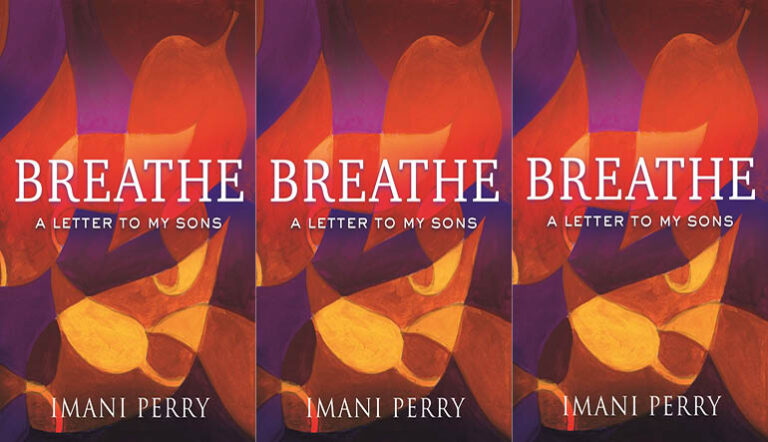Hurricane Season by Fernanda Melchor

Hurricane Season
Fernanda Melchor
New Directions | March 31, 2020
“Some of the events described here are real. All of the characters are invented,” reads the second of two epigraphs from Fernanda Melchor’s English-language debut Hurricane Season. More than evoking the novel’s intended themes and preoccupations, the two sentences from the Mexican novelist Jorge Ibargüengoitia’s The Dead Girls, lodges itself into the psyche of the reader as a reminder that though the details in the forthcoming pages are fiction, they derive and are sourced from very real circumstances, beliefs, and transgressions. The novel, which investigates the death of a so-called Witch found floating, rotten and lifeless, among plastic bags in an irrigation canal by five young boys (four of which are bopping around in their underwear), pummels the reader in a torrent of unrelenting sentences that are gripping and ghastly, forcing a critical look at society.
The novel was inspired by a news article Melchor read while living in Veracruz, Mexico. A person was found dead, murdered because they were suspected of using witchcraft to make the murderer fall back in love with them. Melchor, who in addition to a being a fiction writer is also a journalist, first sought to pursue the project in the manner of Truman Capote’s In Cold Blood, but instead chose to reimagine the crime, actors, and consequences, which results in eight blistering chapters that are equal parts horror, mystery, and political, the latter of which appears most evident. Young girls, hardly children, are constantly referred to as sluts and whores and are deemed responsible for their abuse. Murder is the only viable option to avoid the consequences of being revealed to have had a homosexual experience. Men are bullied by peers into having sex at a young age while women are forced to extremes to avoid unwanted pregnancies, or else be told by a nurse that they’ll “tell the doctor to scrape you out with no anesthesia” to teach them a lesson. And though a body can be found dead, the officials in charge of investigating the crime are more concerned with looting the house for riches than holding the criminal responsible.
Set in the small village of La Matosa, a relatively forgotten oasis of burnouts, drunks, and prostitutes, the structurally poignant novel—there are no paragraph breaks and single sentences can run pages long—unveils the complexity and complications of living in a small town where people like their “gossip served hot.” It’s the rumors and gossip that provide the novel most of its shape. Translated with astute grit, rawness, and unsparing vulgarity by Sophie Hughes, the town and its people are built upon and operate on both hearsay and the supernatural. The Witch grounds the narrative, a mythical figure likened to the “bloodcurdling stories that the townswomen used to tell” kids, stories cemented in folklore, like La Llorona and La Niña de Blanco, symbols used to frighten and entice kids to behave. The Witch, who might actually be a man, has her own unconfirmed yet fervently believed history: the spawn of the devil, alleged murderer of her husband and sons, possessor of a treasure hidden behind an impenetrable door, which becomes a central conflict as the novel unfolds.
One of the novel’s many strengths lies within the manner in which the characters are presented. Rather than direct testimonies, instead, each chapter introduces a character who orbits around, if is not directly linked to, the Witch, who was found with her throat slit, “seething under a myriad of black snakes, smiling.” The sensational and merciless voice of the narrator dives into the character’s inner lives—creating a tapestry of the Witch, the town, and the forces that influence both. We begin with Yesenia, the cousin of Luismi, who is, perhaps, the novel’s central character beyond the Witch, as she seeks to expose the dismal behavior of her wayward, drug-addicted cousin to their grandmother. Munra’s tale is next. He’s Lusimi’s stepfather and the man who drives Luismi and his gang of degenerate friends to the Witch’s house, where the murder takes place. Munra is followed by the young, pregnant Norma, who begins an intimate, yet arguably platonic relationship with Luismi, after running away from her sexually abusive stepfather. Last is Brando, who accompanies Luismi and Munra to the Witch’s house, and from whom the details of the Witch’s murder are finally revealed.
Within the chaos that ensues, it’d be remiss to ignore the passion, if not love, that also runs through the novel. It stems from the two characters who do not have their own chapters, but whose lovers’ quarrel is critical to the novel’s plot. Similar to the Witch, whom the reader grows more familiar with as the novel progresses, Luismi is revealed to be a tragically complex character. Yes, more often than not he moves “around like a space cadet” from the pills he “guzzles like candy,” leaving him lazy and immobile. But he also aspires to be a technician with the Oil Company just outside of town, which is promised to him by someone proved to be more than a friend. Yes, he’s accused of being the Witch’s murder. Yet he feeds and shelters Norma, who he finds frightened and alone and harassed by narcos on a park bench, without advances or strings attached, and whose life he saves after a botched abortion. The moments are fleeting but are undoubtedly there. Like in the basement of the Witch’s mansion where Luismi, his friends, local farmers, and other men gather for raucous, karaoke-style, drug-infused, and sex-laced parties. Where speakers warble while the Witch dances on stage and who under disco lights looks like a “giant wind-up doll, a nightmarish mannequin come to life.” In the grips of such a haze, a brief moment—like whenever Luismi, the least expected but whose nickname stems from the fact his singing is reminiscent of a famous singer, takes the mic with a voice “so beautiful, so intense, so amazingly pure”—can suspend all activity, rendering the characters and the reader in awe.
Though the issues explored in Melchor’s stirring novel are undoubtedly specific to rural Mexico, and Mexico at large, they are far from unfamiliar to the rest of Latin America and the greater world. Instances of misogyny, homophobia, corrupt governments, inaccessible healthcare, and femicide, which, unfortunately, remain fixtures in our collective society, litter the novel. It feels appropriate that throughout the novel these occurrences are seemingly unavoidable, a fact of life in this small town of people who speak with ease about the most gruesome events. It’s exactly this comfort in the grotesque, the casual nature of it, that is ultimately the most disturbing yet captivating aspect of the novel. A debut that dares you to put it down, Melchor’s Hurricane Season drowns its reader in ominous truth, accentuating real life through fiction.


